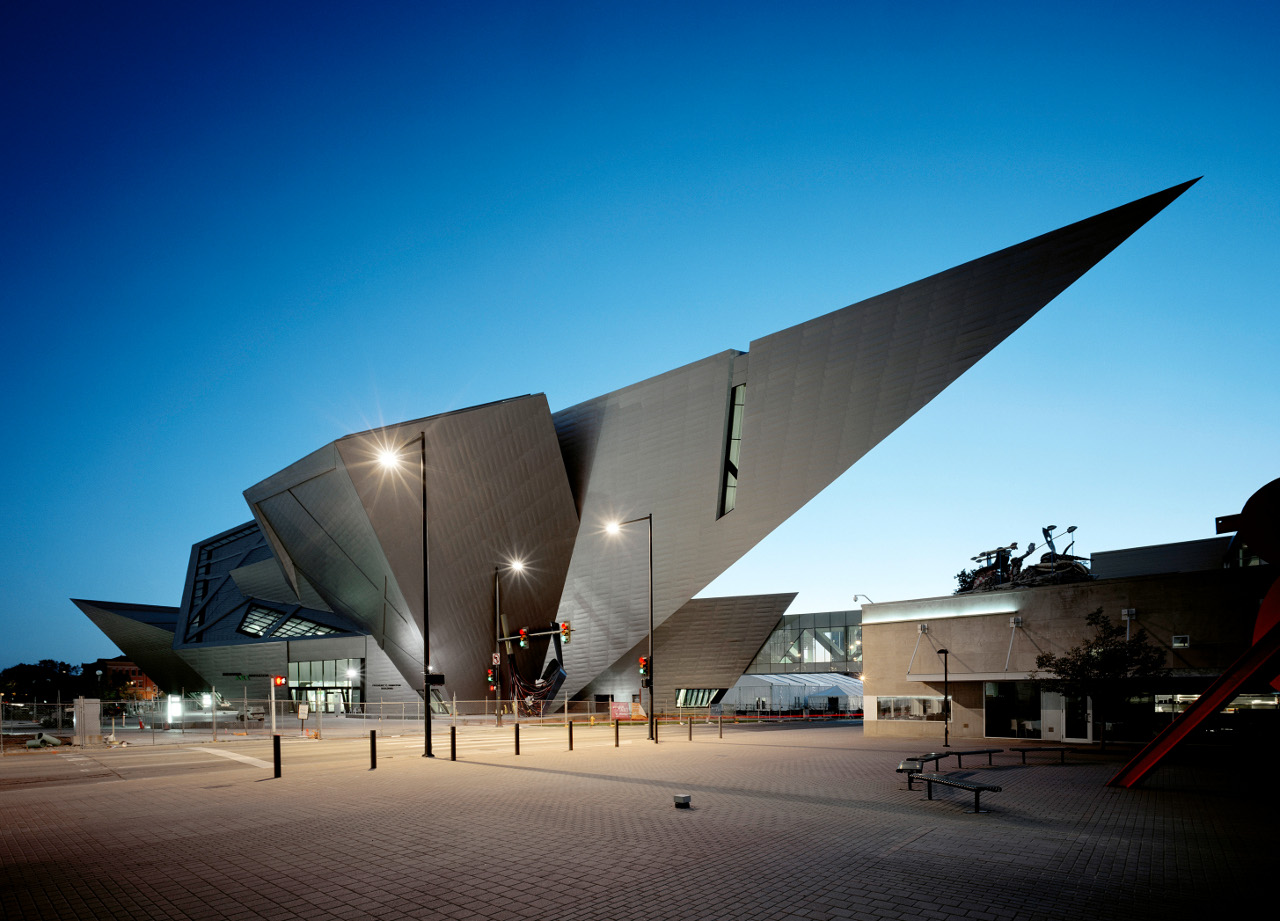The Denver Art Museum is one of the largest art museums between Chicago and the West Coast, with a collection of more than 70,000 works of art divided between 10 permanent collections including African, American Indian, Asian, European and American, modern and contemporary, pre-Columbian, photography, Spanish Colonial, textile, and western American art. The museum complex totals more than 350,000 square feet.
DAM is noted for its distinctive architecture, providing an architectural landmark for the city of Denver. In 1971 the museum opened the 24-sided, two-towered North Building by Ponti in collaboration with James Sudler Associates of Denver. Over one million faceted, shimmering gray tiles provide cladding for the radical seven-story structure. This architectural icon remains the only completed project in the United States by this important Italian master of modern design.
Then, in 2006, the Denver Art Museum nearly doubled in size with one of the country's most unique structures. A sharply cantilevered section of the new Frederic C. Hamilton Building juts across the street towards the North Building above an enclosed steel-and-glass bridge that links the two structures.
The Hamilton Building includes new galleries for its permanent collection, three temporary exhibition spaces, art storage, and public amenities.
Exhibitions & Dates
By Design: Stories and Ideas Behind Objects
Oct 24 2021 -
Explores the abundance and versatility of approaches to design
Perfectly Imperfect: Korean Buncheong Ceramics
Dec 3 2023 -
70+ exquisite works of Korean Buncheong ceramics from the 15th century to today
